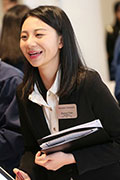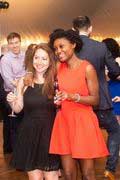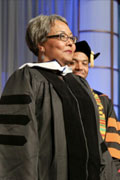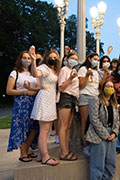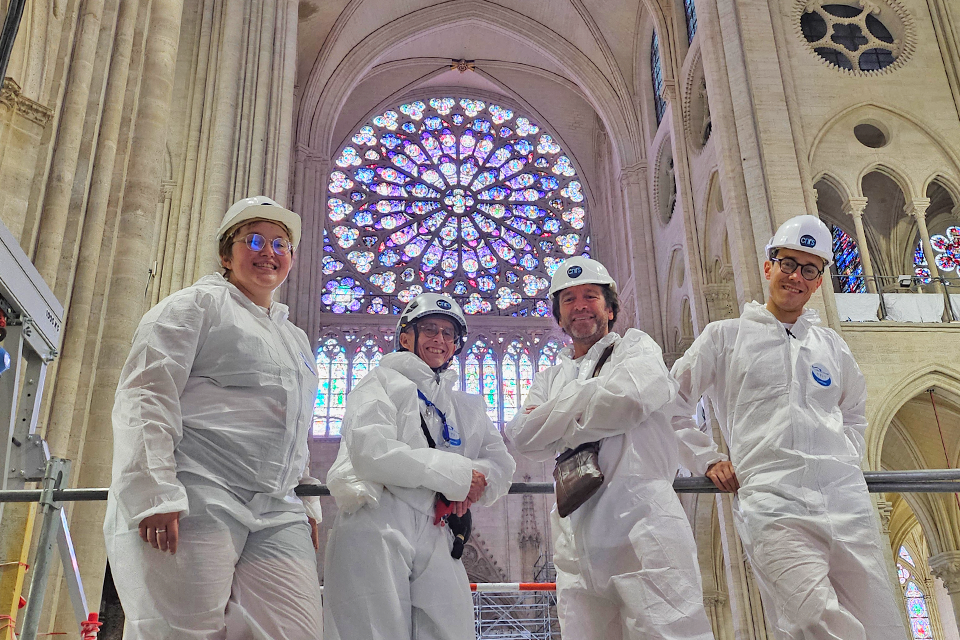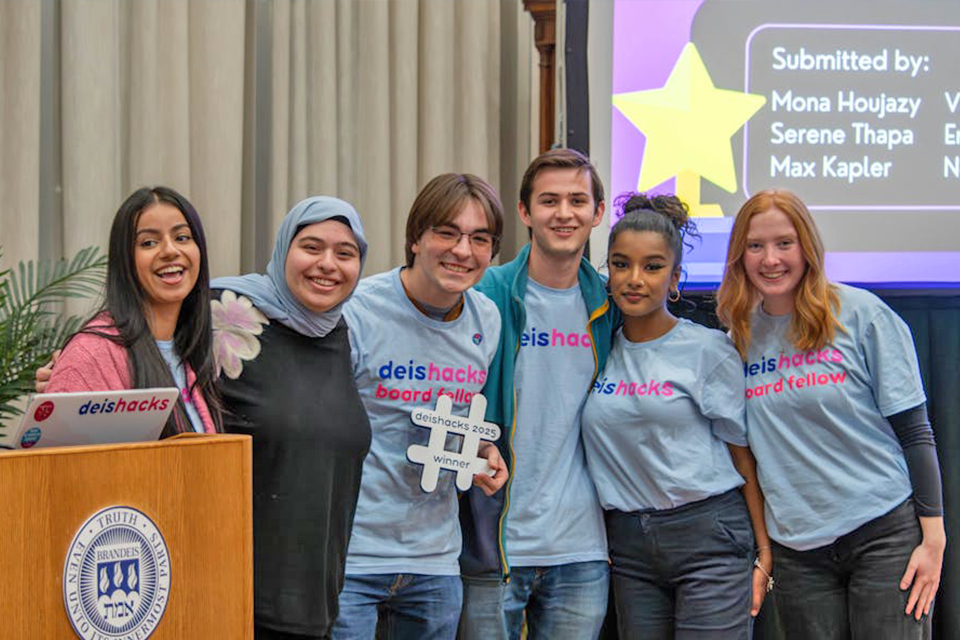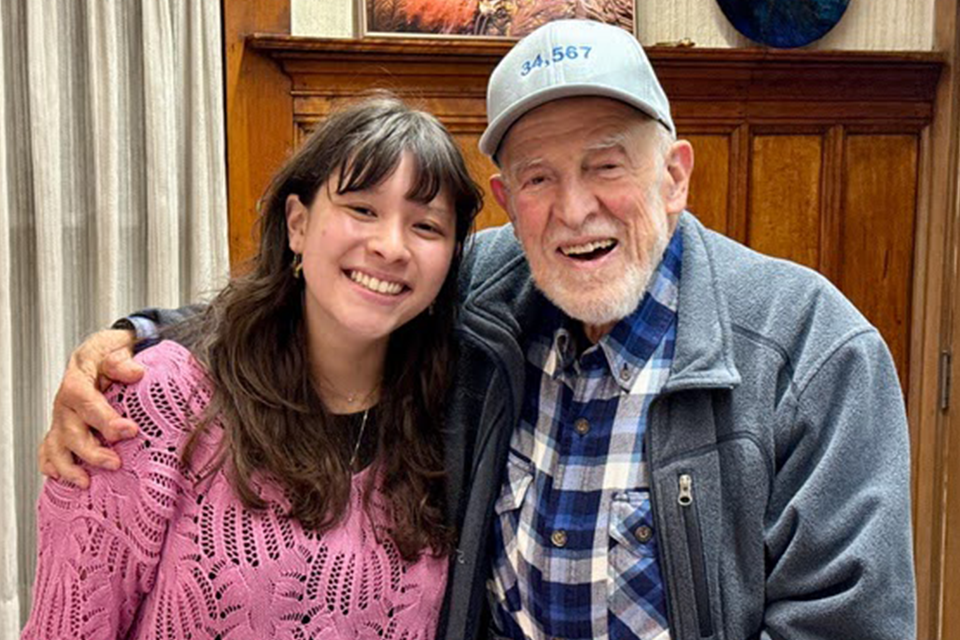Brandeis Alumni, Family and Friends
Building a Different Kind of Engineer
April 10, 2025
New Undergraduate Program Will Prepare Students to Solve Societal Problems
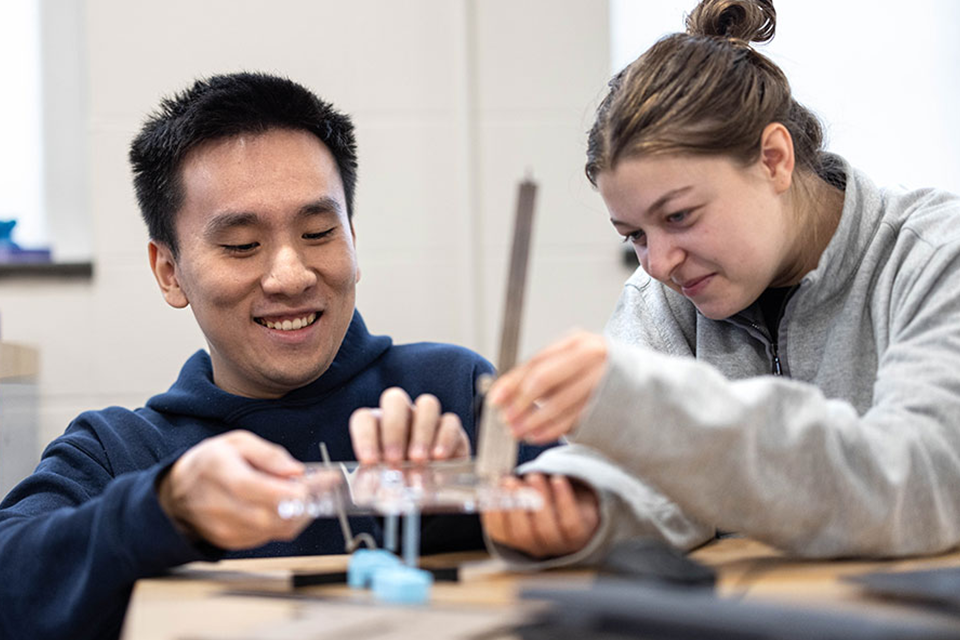
When he was a high school student looking at colleges, Vincent Calia-Bogan ’25 applied to several stand-alone engineering schools. However, he was concerned he would end up studying primarily with other engineers. Receiving a well-rounded education in the arts and humanities was essential to his interests and goals, too.
So he came to Brandeis to study neuroscience. “What stood out to me was the strong emphasis Brandeis places on multidisciplinary studies,” he says. “To me, studying the liberal arts is a practice in becoming sympathetic. And the scientists and engineers who understand the social aspects behind the problems they seek to solve — and are sympathetic to the people affected by those problems — almost always end up doing the best work.”
Now, as Brandeis prepares to launch its own engineering program, it’s doing so with students like Calia-Bogan in mind. It’s also responding to market demand. As technology advances and people seek to leverage it to address societal challenges, the need for skilled engineers is growing. In fact, given the increasingly competitive landscape facing higher education, the Undergraduate Admissions office believes there is no better time for Brandeis to offer students the opportunity to pursue engineering in this unique and very multidisciplinary way.
The goal? To produce a new generation of technically skilled, intellectually nimble, and socially minded engineers. Tikkun olam, the Jewish value meaning “to repair the world,” underpins the curriculum. The program will provide training in how engineers think, design, and solve problems. Coursework will draw from across the life and physical sciences, as well as from the liberal arts and business.
“That integration is key to shaping engineers who can work side by side with scientists and business leaders to solve important and pressing problems,” says Avital Rodal, program co-chair and professor of biology.
“Rather than focusing solely on traditional disciplines like mechanical or electrical engineering, our program will provide a versatile engineering education grounded in scientific fundamentals,” adds Seth Fraden, engineering program co-chair and professor of physics. “It will equip students to apply their knowledge across a range of fields while also providing a strong foundation for students wishing to specialize.”
The program will leverage Brandeis’ historic strengths in engineering-related fields such as neuroscience, computer science, and biomaterials. Brandeis is widely recognized nationally as a leader in the latter, as evidenced by its prestigious Bioinspired Materials Research Science and Engineering Center, which has been funded by the National Science Foundation since 2008.
Meanwhile, Calia-Bogan is excited to see the program take shape. “The target audience really is students exactly like me,” he says. He was delighted to provide input during the development of the first course and serve as its first teaching assistant.
Brandeis began offering its first engineering course, Introduction to Design Methodology, in fall 2023. The course provides an overview of the engineering design process with a focus on human-centered design. Students work in small teams to identify real social problems, design solutions, and build out models. For example, students might design an assistive device to solve common problems for humans or animals, such as cutlery for people whose tremors make it difficult to use regular silverware or a board game for visually impaired children. In future semesters, students might focus on solar lighting systems, green design, or water systems.
A year later, a second course, called Modeling and Simulation — in which students build models of physical systems like mass transport systems — launched. These courses are open to several different majors, bringing engineering thinking and tools to students across the Brandeis curriculum.
Classes meet in a new active-learning classroom and digital fabrication space in Abelson Hall. The classroom features more than 30 machines, including 3D printers; laser cutters; and devices for cutting, drilling, and milling. (The classroom will also be used by other programs. For example, students in the humanities course Ancient Technologies, Modern Approaches use 3D scanning and printing to reconstruct and study ancient artifacts.)
These milestones hint at what’s to come when the full program launches in fall 2026. Rodal looks forward to seeing the impact the program will have on the university and the world at large.
“We’re a small community of people who know each other very well,” she says. “This leads to spontaneous interactions, which can then lead to really amazing breakthroughs. Brandeis presents a really unique environment for these kinds of collaborations. The potential for discovery and invention is limitless.”
Fueling Academic Innovation
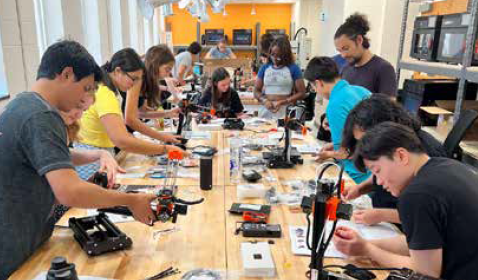
It’s not just students who are excited by the new engineering program. Alumni and friends are making investments to help start and sustain the program. Burt ’57 and Karin Meyers ’59 provided seed funding to get the program off the ground. Leith and Judy Baletin, who are active in the Arizona chapter of the Brandeis National Committee, created an undergraduate scholarship for future engineering students through their estate plan. And Robert Mallet is funding a new teaching position for a lecturer with expertise in both engineering and business.


